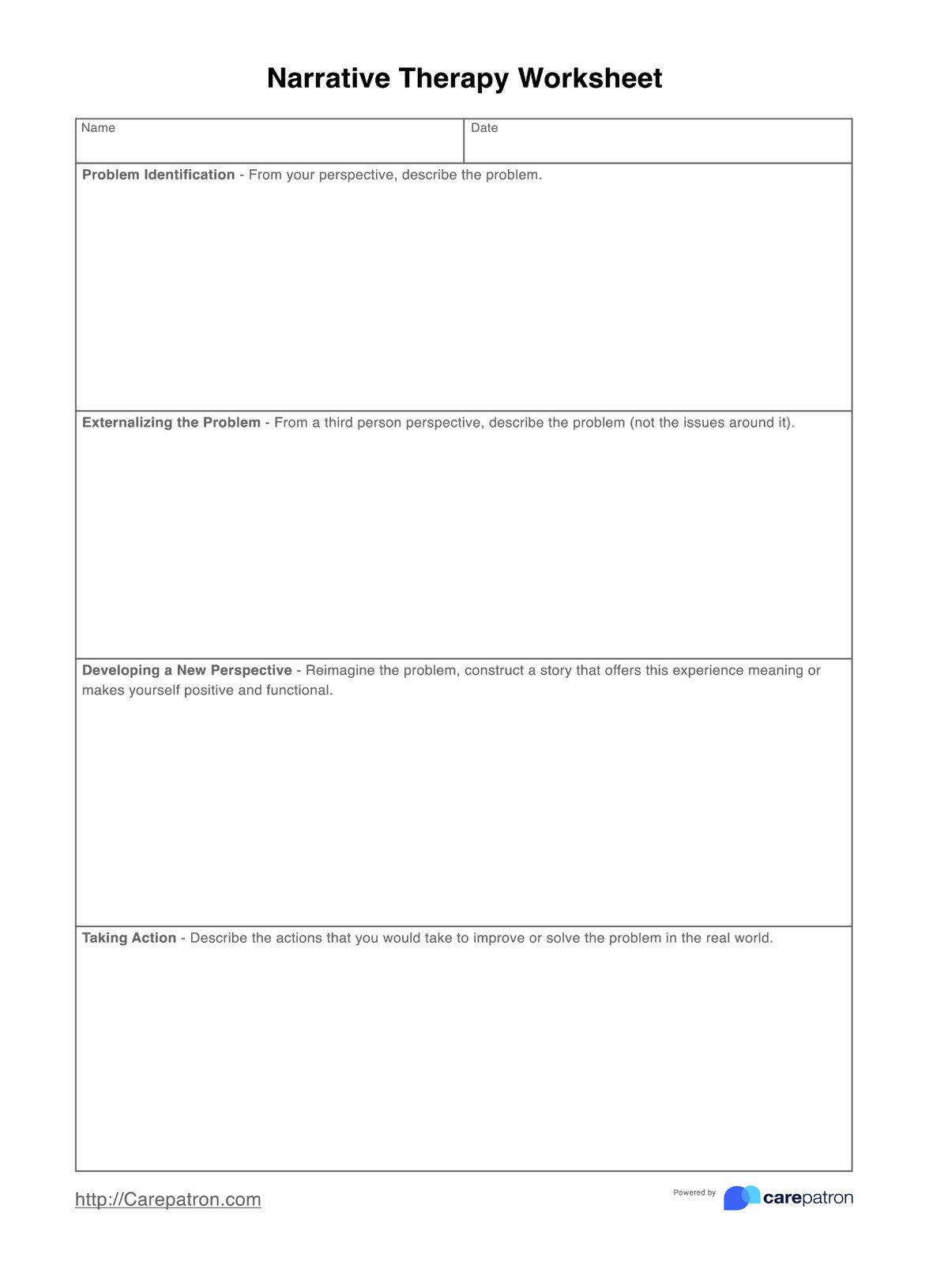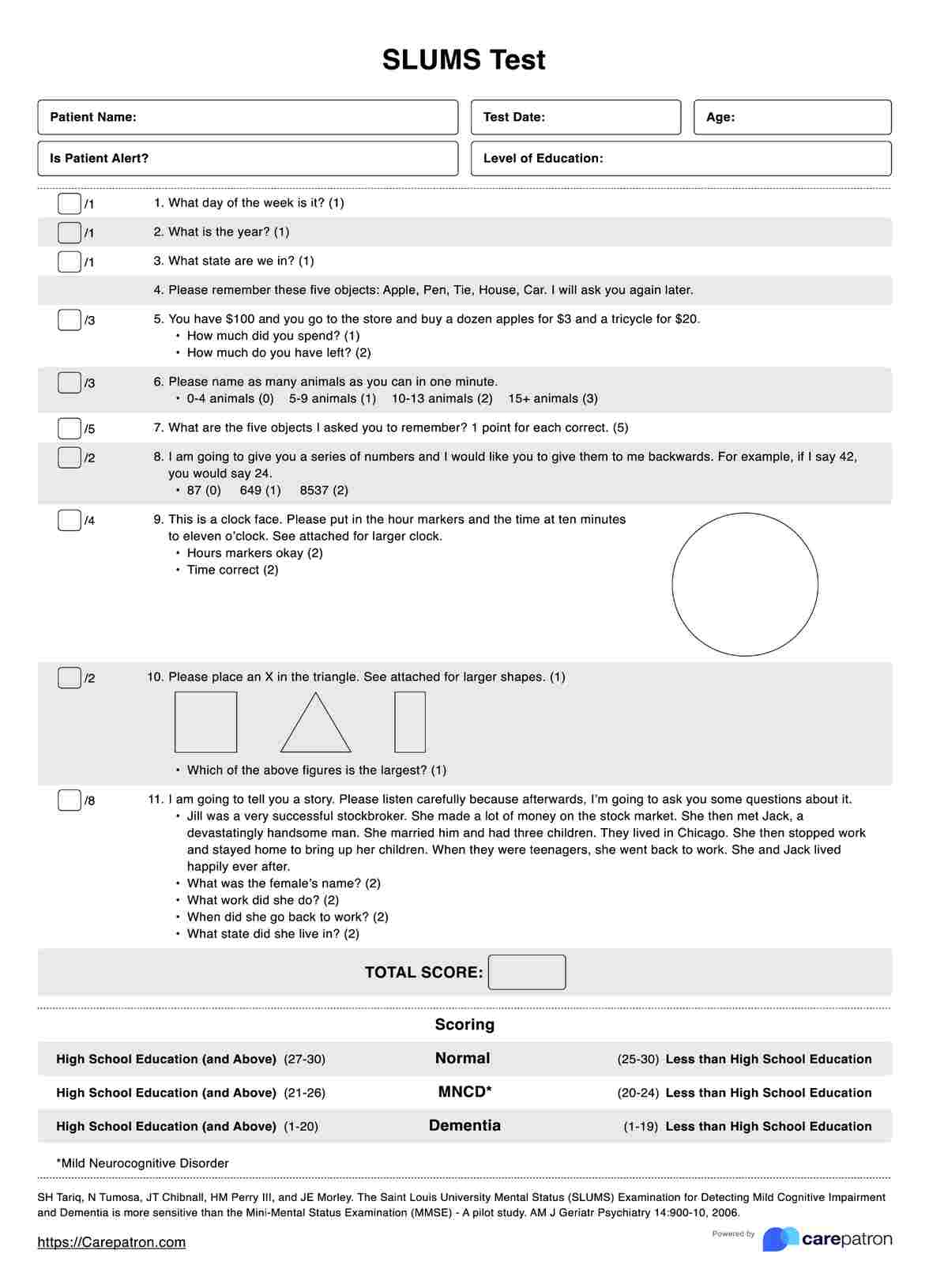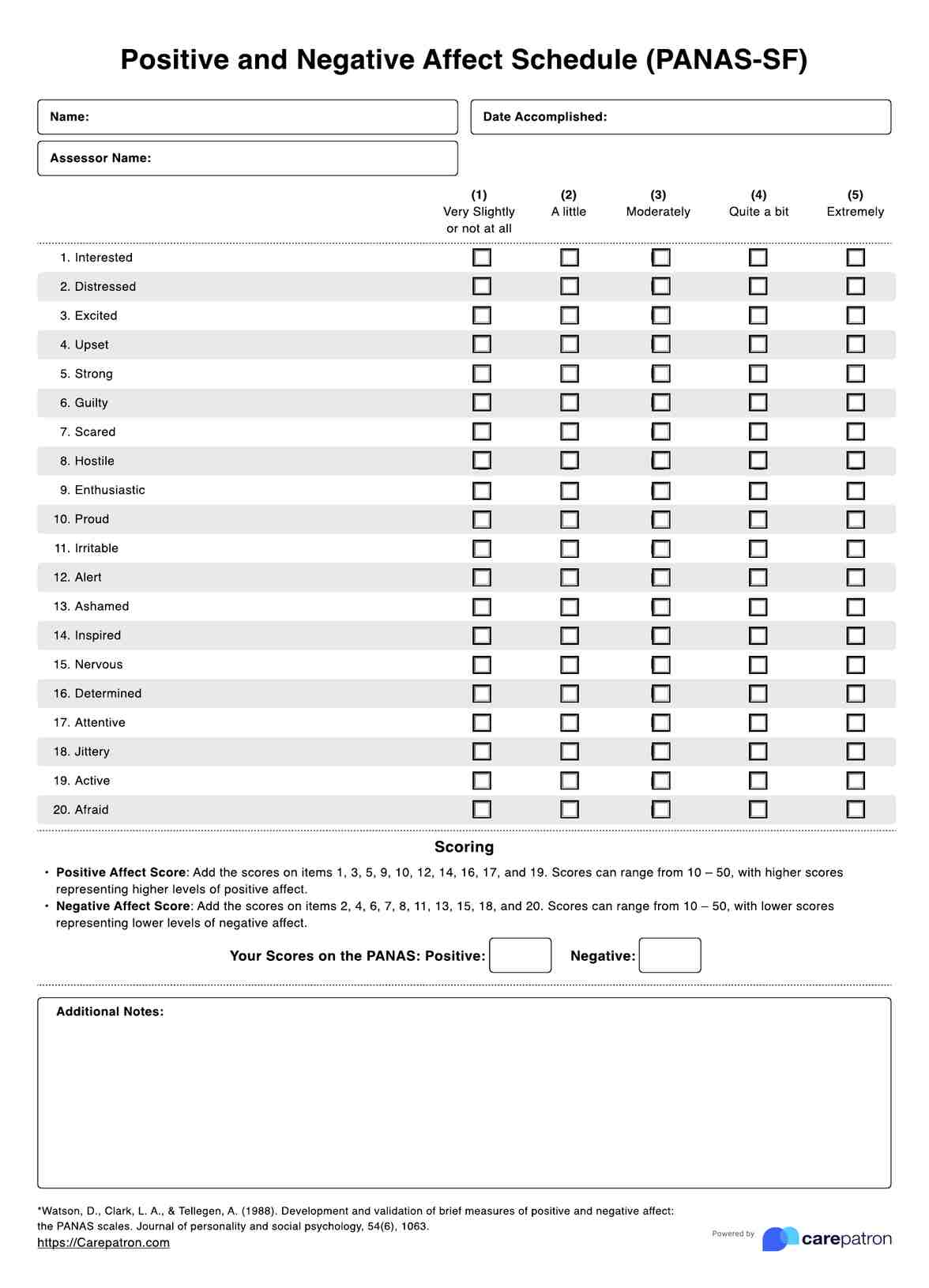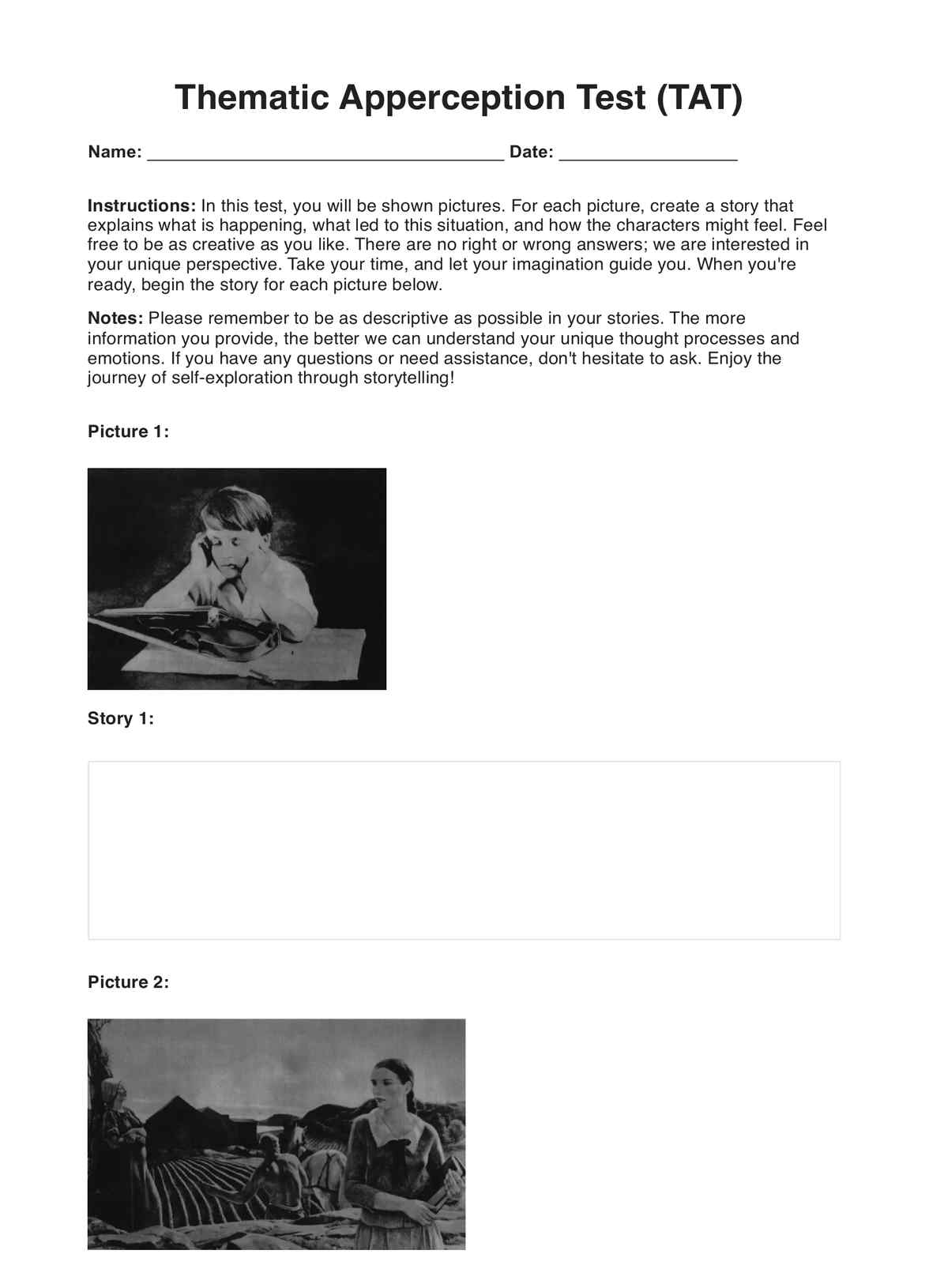ASIA Impairment Scale
The Asia Impairment Scale (AIS) is a tool used to assess the severity of spinal cord injuries. Learn more about the AIS and its use in this brief overview.


What is an ASIA Impairment Scale (AIS)?
is a standardized neurological examination that describes a patient’s functional impairment due to Spinal Cord Injury (SCI). It was developed by the American Spinal Injury Association (ASIA) as a universal classification tool for spinal cord injuries based on a standardized sensory and motor assessment. This scale indicates how much sensation an individual feels after light touch and pinprick at multiple body points and tests critical motions on both sides.
The ASIA Impairment Scale is primarily regarded as the most studied and valuable of all SCI neurological classification schemes.
The ASIA Impairment Scale (AIS) classifies spinal cord injuries into five categories: A, B, C, D, and E. These categories are based on the severity of the injury and the extent of the probable neurological impairment. The five types are defined as follows:
- AIS A: Complete Injury: There is no sensory or motor function in the sacral segments S4-S5.
- AIS B: Incomplete Injury: Sensory function is preserved but not motor function below the neurological level and includes the sacral segments S4-S5
- AIS C: Incomplete Injury: Motor function is preserved below the neurological level. More than half of key muscles below the neurological level have a muscle grade of less than 3 (grades 0-2).
- AIS D: Incomplete Injury: Motor function is preserved below the neurological level. At least half of the key muscles below the neurological level have a muscle grade greater than or equal to 3.
- AIS E: Typical Injury: Sensory and motor function are normal.
The ASIA Impairment Scale includes a physical exam, neurological evaluation, and other diagnostic tests such as imaging studies. The assessment results are used to identify the most appropriate treatment and rehabilitation plan needed for a patient with SCI.
The ASIA Impairment Scale is a widely used tool for clinical practice and research, providing a standardized method of assessing and communicating the severity of spinal cord injuries. AIS is a great help for medical professionals in developing treatment plans, monitoring progress, and evaluating outcomes.
It is also a valuable resource for healthcare professionals working with individuals with SCI better to understand the extent and nature of their impairments. Moreover, ASIA Impairment Scale can be used to compare the effectiveness of different treatment and rehabilitation strategies.
ASIA Impairment Scale Template
ASIA Impairment Scale Example
How does this ASIA Scale work?
The Asia Impairment Scale (AIS) is a standardized system used to assess and classify the severity of spinal cord injuries. The AIS works by determining the extent and level of motor and sensory function preserved below the level of damage.
To determine the AIS grade, a clinician will conduct a thorough neurological examination of the patient, assessing motor function (e.g., strength, movement), sensory function (e.g., sensation, touch), and reflexes below the level of injury.
The clinician will also review the patient's medical history and imaging studies (e.g., MRI, CT scans) to confirm the level and extent of the injury. For a better understanding, here is a step-by-step process for how ASIA Scale works:
- Identify the Level of Injury
The first step is to identify the level of the injury, which refers to the lowest level of the spinal cord that has normal sensory and motor function. A diagnostic imaging test, like an MRI or CT scan, is typically used to determine this.
- Test Motor Function
Then, by assessing the strength and movement of essential muscles in each limb, the doctor will test the patient's motor function below the level of injury. The patient will be asked to make a series of motions, and the doctor will grade them on a scale of 0 to 5, with 5 representing normal strength and 0 representing no movement.
- Test Sensory Function
Clinicians will also examine the patient's sensory function below the level of injury by assessing their ability to perceive touch, pinprick, and other stimuli. The clinician will provide a score depending on how well the patient can pick up on these cues.
- Test Reflexes
By inducing reflexes like knee-jerk reflexes, the physician can evaluate the patient's reflexes below the level of injury.
- Determine the ASIA Grade
The clinician will establish the patient's ASIA grade based on the motor function, sensory function, and reflex scores. The five possible grades are A (complete injury), B (incomplete sensory injury), C (incomplete motor injury with less than half of key muscles below the level of injury having a muscle grade of 3 or greater), D (incomplete motor injury with at least half of key muscles below the level of injury having a muscle grade of 3 or greater), and E (normal sensory and motor function).
- Interpret the Results
The ASIA grade offers essential information regarding the severity of the patient's injury and the likelihood of recovery. Patients with higher ASIA grades (D or E) typically experience better results and have a greater chance of regaining their functional abilities than patients with lower grades (A, B, or C).
The ASIA scale is an important tool for assessing and categorizing the severity of spinal cord injury. It helps healthcare practitioners to communicate about the injury more effectively and to make more knowledgeable choices regarding the treatment and rehabilitation plan since it offers a standardized and objective assessment.
When to use an ASIA Scale
The degree of spinal cord injuries is determined and categorized using the AIS. Healthcare experts like neurologists, neurosurgeons, and rehabilitation specialists often use it in a clinical context to assess patients with possible or actual spinal cord injuries.
The following circumstances call for the usage of the ASIA Impairment Scale:
- Diagnosis
The severity of a spinal cord injury is determined using the ASIA Impairment Scale. It offers crucial information regarding the type and degree of the injury by assessing the motor and sensory function level preserved below the injury level.
- Treatment Planning
Medical experts can plan effective treatments for patients with spinal cord injuries with the use of the ASIA Impairment Scale. Individuals with higher ASIA grades (D or E) may benefit from more aggressive surgical or rehabilitation procedures. In contrast, those with lower grades (A, B, or C) may require more conservative therapies.
- Monitoring Progress
The ASIA Impairment Scale also assesses various treatments' effectiveness and tracks patients' advancement during rehabilitation. Healthcare providers can identify whether a patient is improving, stabilizing, or decreasing and modify treatments as necessary by monitoring motor and sensory function changes over time.
The ASIA scale is crucial for diagnosing and treating spin injury injuries. It aids medical professionals in making more educated decisions about treatment and rehabilitation by offering a systematic and objective assessment of the injury.
Who is this ASIA Scale PDF for?
Healthcare professionals with experience evaluating patients with spinal cord injuries and training in neurological assessment frequently use the ASIA Impairment Scale. This includes:
- Neurologists
These specialists are adept at identifying and treating nervous system diseases, especially spinal cord injuries.
- Neurosurgeons
These specialists have received training in spinal cord injury treatment and other nervous system-related surgeries.
- Rehabilitation Specialists
These medical professionals, such as physical and occupational therapists, collaborate with patients to create rehabilitation programs that can aid in their recovery from spinal cord injuries and help them regain function.
- Emergency Medical Personnel
In some situations, emergency medical personnel can use the ASIA Impairment Scale to promptly determine the severity of a spinal cord injury on the scene and make decisions regarding transport and initial treatment.
In general, the ASIA Impairment Scale should only be used by medical professionals that have a thorough understanding of spinal cord injury and are trained and experienced in neurological assessment. It effectively expresses the severity of spinal cord injuries and estimates recovery and rehabilitation potential.
.png)
Benefits of free ASIA Scale
Having a free ASIA Impairment Scale (AIS) has several advantages, including:
- Accessibility
Healthcare professionals and researchers worldwide can use the ASIA Impairment Scale without paying for it. This could encourage more people to utilize the scale and improve the quality of spinal cord injury care.
- Standardization
ASIA Impairment Scale is a systematic system for evaluating the severity of spinal cord injuries. Through this tool, healthcare providers may guarantee that they are employing the same method as their colleagues and presenting spinal cord injuries in a consistent and standardized way.
- Improved Patient Care
The ASIA Impairment Scale gives important information on the severity of a spinal cord injury, which can aid medical professionals in developing treatment and rehabilitation plans. Healthcare workers can accurately diagnose patients with spinal cord injuries and enhance the quality of their treatment by using the scale.
- Research
The ASIA Impairment Scale is a valuable resource for researchers studying spinal cord injuries. Through this free tool, researchers may readily collaborate and analyze data from different studies, improving the knowledge of spinal cord injury and paving the way for new treatments.
- Cost Saving
Because healthcare providers and organizations do not need to pay for access to the scale, the free template of the ASIA Impairment Scale can assist in lowering the cost of care for spinal cord injuries. Smaller institutions and clinics may find it easier to offer patients with spinal cord injuries high-quality care.
Commonly asked questions
The ASIA Impairment Scale does not account for other variables affecting patient outcomes, such as pain, stiffness, and psychosocial variables. It can only evaluate motor and sensory function below the degree of injury.
The ASIA Scale can offer insight into the likelihood of recovery and rehabilitation following a spinal cord injury but cannot forecast a patient's specific recovery trajectory.
Alternatively, scales, such as the Frankel Scale, Spinal Cord Independence Measure, and Functional Independence Measure, can also be used to evaluate spinal cord injury.


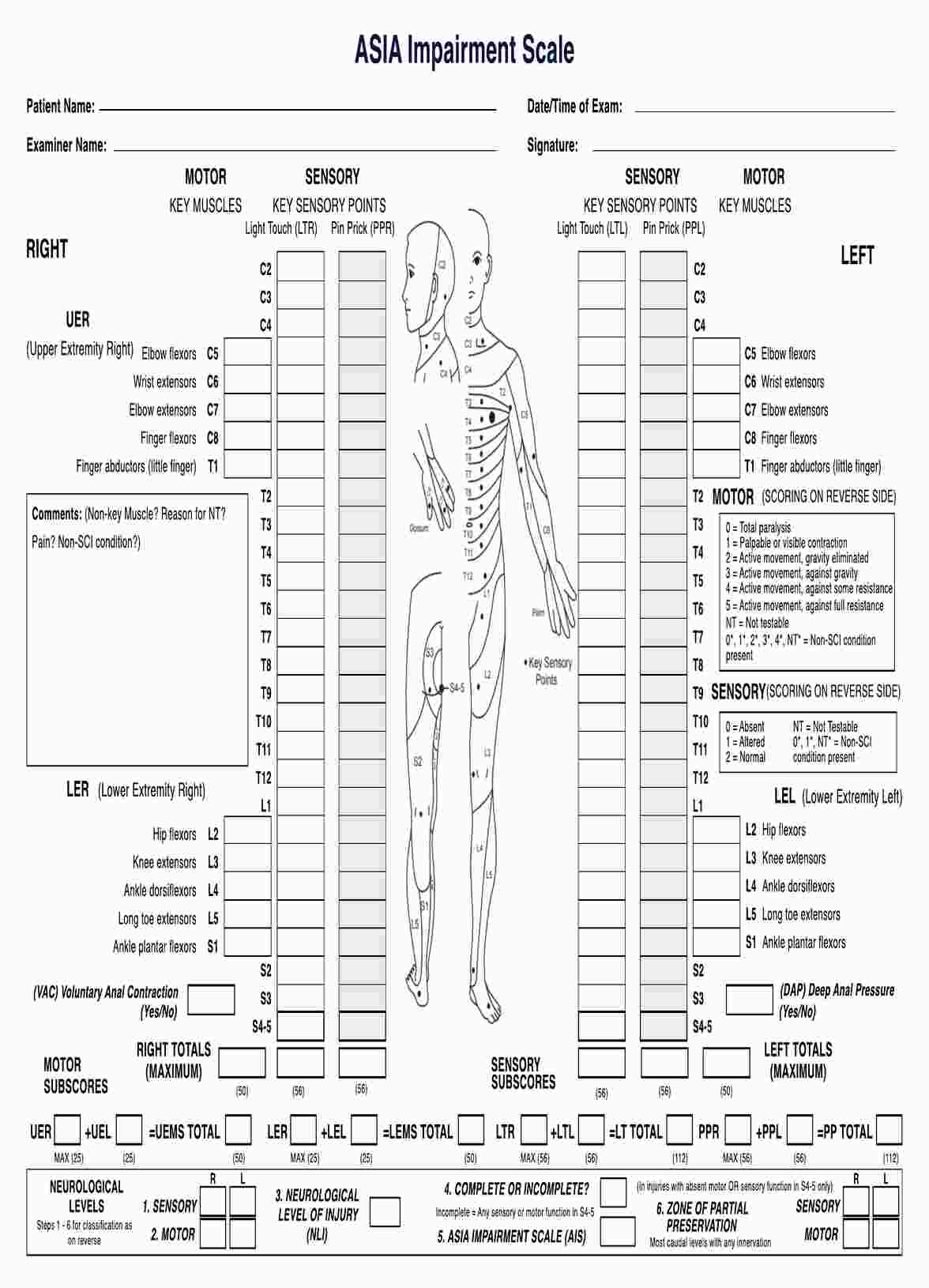
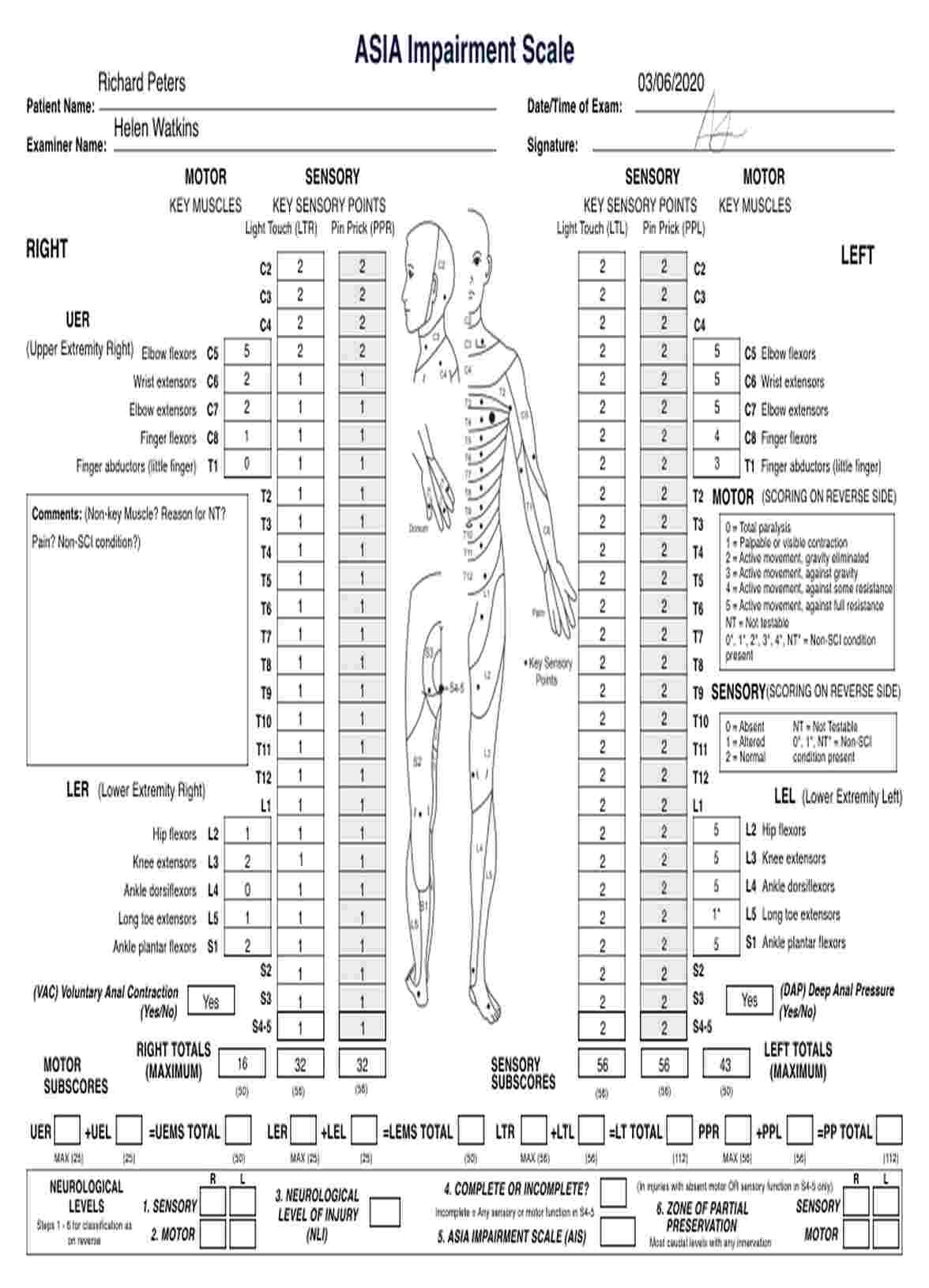

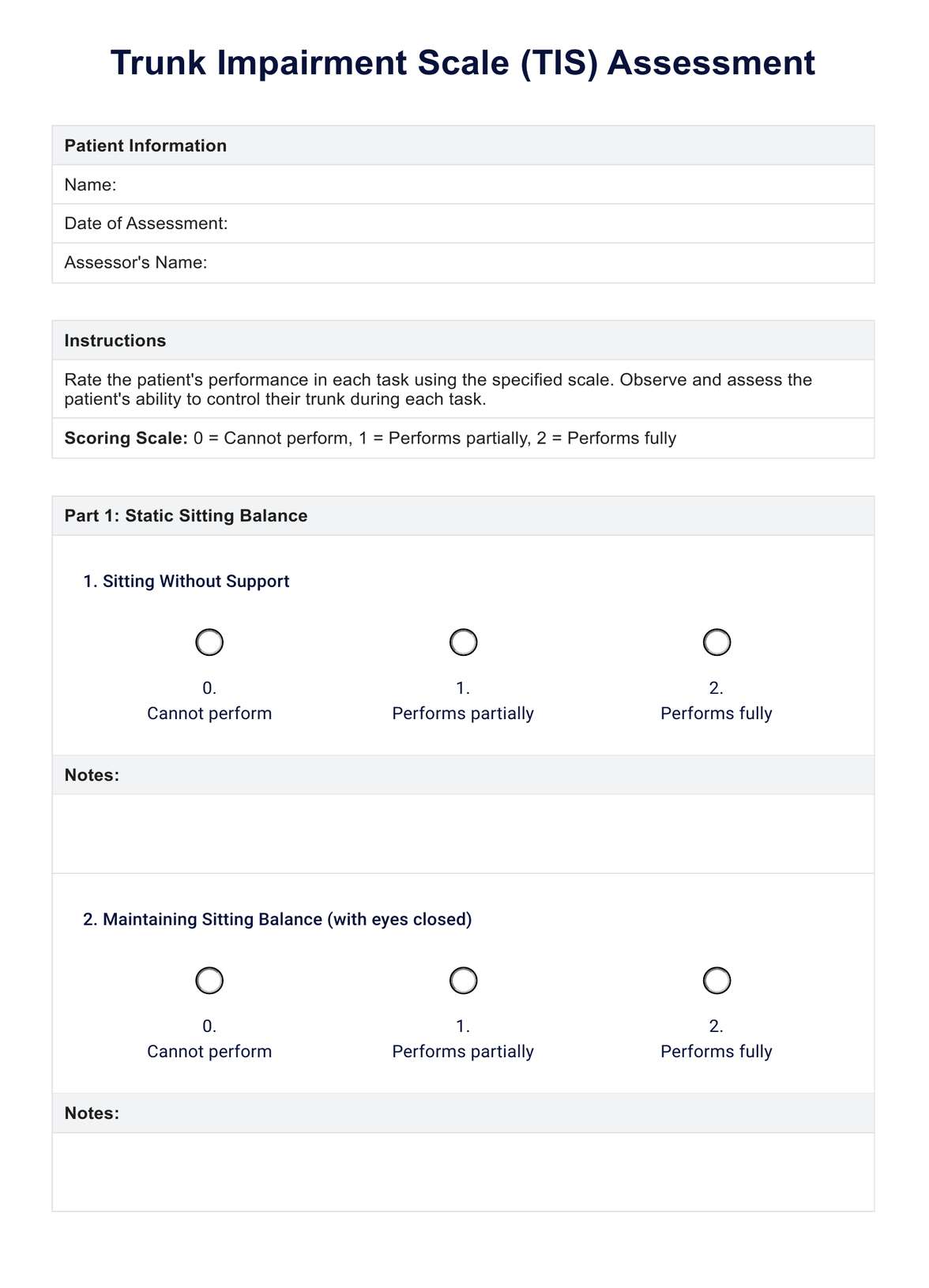













-template.jpg)























































































